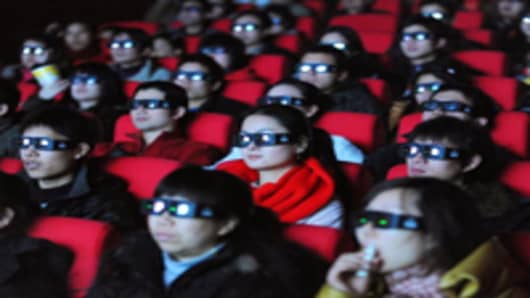In an interview on Sunday, Christopher J. Dodd, chief executive of the Motion Picture Association of America, said the focus on premium-format films reflected a bit of diplomacy that allowed the Chinese to add 14 films in a special category, without formally abandoning their existing quota of 20.
“To use their words, it was too politically sensitive for them to break that 20-film quota,” said Mr. Dodd. The new system, he said, is subject to review in five years, and it is still possible that American studios and officials will press for more access in the interim.
The agreement carries a proviso that the special-category films be available in premium 3-D or large-screen Imax formats, even if they are accompanied by conventional 2-D versions.
To some extent, the format requirement simply corresponds to realities in the Chinese market. Rapid growth in the number of screens — from about 6,200 last year to a projected 16,000 three years from now — has been accompanied by a major expansion in both 3-D and Imax theaters, with an audience response to match.
“Mission: Impossible — Ghost Protocol,” which had an Imax version, and “Transformers: Dark of the Moon,” in both Imax and 3-D, were blockbusters in China. “Avatar,” another 3-D extravaganza, played 24 hours a day in some Chinese theaters.
But the agreement effectively guarantees, at least for the foreseeable future, that only Hollywood’s most fantastic enterprises will be admitted to China on a favored basis, since those dominate the premium formats specified in the trade deal.
Of about three dozen 3-D films scheduled for release by American studios in the next year, almost all are animated whimsy, like “Dr. Seuss’ the Lorax,” from Universal Pictures; superhero fantasies, like “The Amazing Spider-Man,” from Sony Pictures ; horror, like “The Cabin in the Woods,” from Lionsgate ; or science fiction, like “Prometheus,” from 20th Century Fox.
A “Titanic” re-issue in 3-D from Paramount Pictures, and a 3-D version of “The Great Gatsby,” from Warner Brothers, are among a handful of films that might be favored under the new rule, while bridging any cultural divide between West and East with reality-based stories.
If Universal’s new version of “Les Misérables” appears next December in 3-D or Imax, it can presumably seek to take advantage of the expanded quota as well. Mr. Dodd speculated that the agreement might prod some studios to reformat existing films in 3-D versions, or to develop a broader range of 3-D and large-screen fare.
The agreement — struck partly through personal diplomacy between two vice presidents, Joseph R. Biden Jr. and Xi Jinping — also increased a foreign studio’s permitted share of box-office receipts from a film released in China to 25 percent, from 13 percent. The deal promises a significant increase in revenue from a growing Chinese movie market that had $2.1 billion in ticket sales last year, and is expected to reach $5 billion by 2015.
Speaking this month about a new China-based film fund that expects to invest at least $800 million in both Chinese film distribution and in Western-led productions, Bruno Wu, one of its partners, pointed to “Mission: Impossible — Ghost Protocol” — a fanciful action thriller — as the kind of import that would have a future in China.
“We’re primarily going to be working with the tent-pole side of the business,” Mr. Wu said in an interview.
The Independent Film and Television Alliance, which represents independent filmmakers, said the agreement included provisions that would help independent movies, with their often-grittier fare, get a share of the Chinese market. Mr. Dodd said he believed nonstudio films attracted nearly $100 million in China last year.
While allowing new rights to audit film revenue and consult on marketing campaigns, the independent film alliance noted, the deal also bars any attempt by a Chinese partner to declare rejection by state censors a material breach of a distribution agreement.
Instead, the alliance said, a film studio and Chinese state-owned enterprises will be required to “work together when these situations arise.”
And arise they may, even with the 3-D blockbusters newly permitted by the deal.
A film as fanciful as “Mission: Impossible III,” after all, required some editing for the Chinese market: unflattering scenes that showed laundry hanging in Shanghai had to be cut for its 2006 release there.


